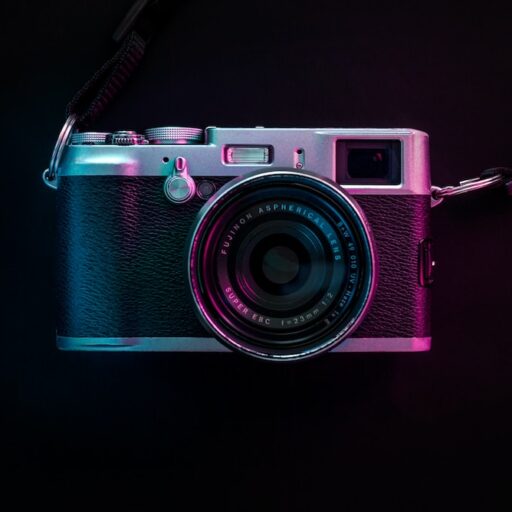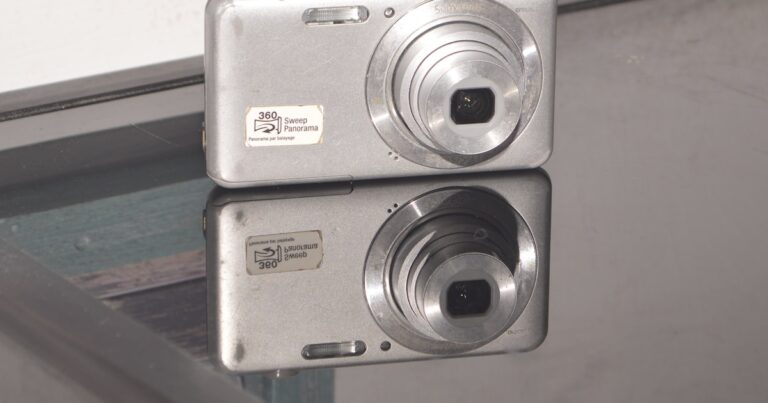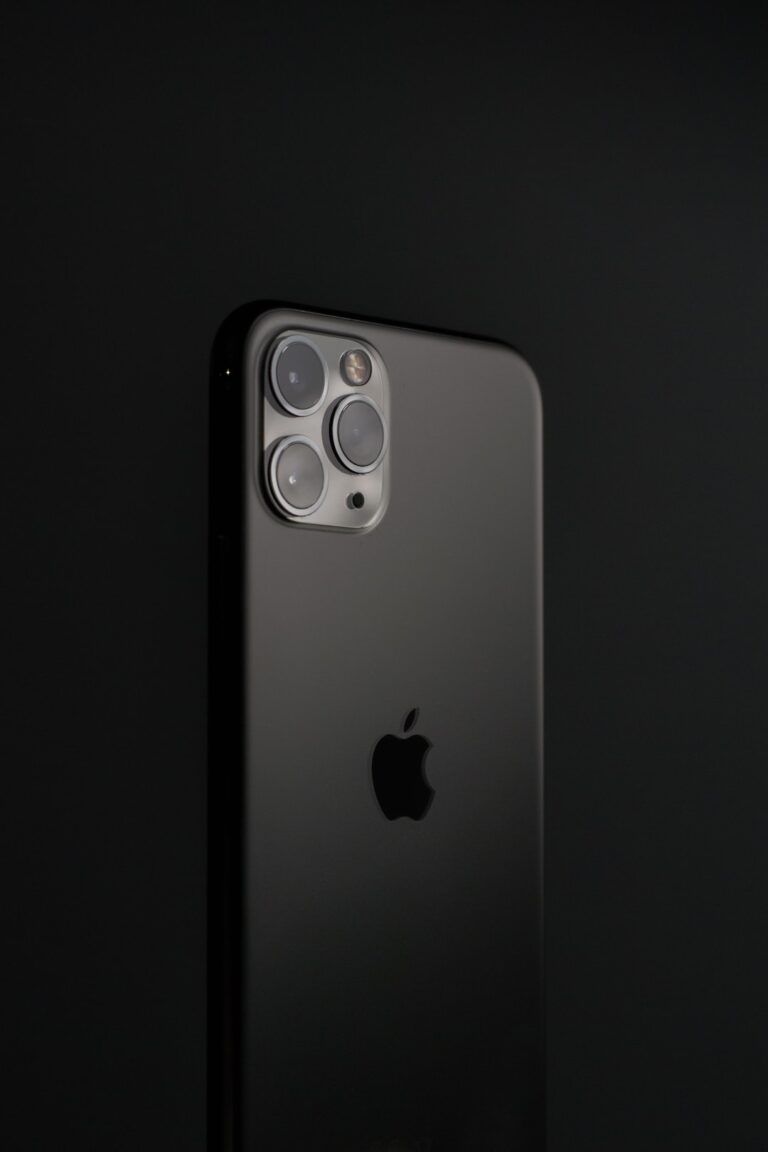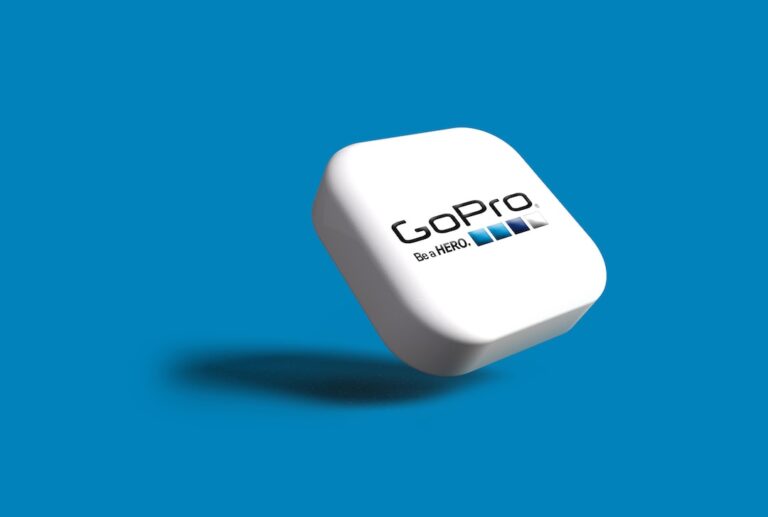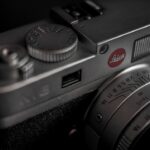Support our educational content for free when you purchase through links on our site. Learn more
Do Professional Photographers Prefer Canon or Nikon Cameras? 🤔 (2025)
When it comes to choosing between Canon and Nikon, professional photographers have been debating this for decades—almost like a photographic version of “Team Coke vs. Team Pepsi.” But which brand truly dominates the pro world in 2025? Spoiler alert: the answer isn’t as black-and-white as you might think. From groundbreaking mirrorless innovations to legendary lens ecosystems, both Canon and Nikon bring unique strengths to the table.
We’ve gathered insights from seasoned pros at Camera Brands™ who’ve shot everything from wildlife safaris with Nikon’s built-in teleconverter lenses to high-profile weddings with Canon’s silky autofocus. Curious about which system offers the best image quality, autofocus, or video features? Or maybe you want to know which brand’s lens lineup will future-proof your gear bag? Stick around—we’ll unravel all this and more, plus share real-world anecdotes that might just tip the scales for you.
Key Takeaways
- Both Canon and Nikon are trusted by professionals worldwide, each excelling in different photography genres and features.
- Nikon leads with superior dynamic range, built-in teleconverter lenses, and rugged ergonomics favored by wildlife and landscape photographers.
- Canon shines in video autofocus, user-friendly menus, and a rapidly expanding RF lens lineup, making it a favorite for hybrid shooters and portrait pros.
- Mirrorless technology is rapidly evolving for both brands, so future-proofing your gear means considering the ecosystem, not just the body.
- Ultimately, personal preference, shooting style, and hands-on experience should guide your choice—not just brand loyalty.
Ready to explore the best Canon and Nikon gear for your photography journey?
- 👉 Shop Canon Cameras: Amazon | B&H Photo | Canon Official Website
- 👉 Shop Nikon Cameras: Amazon | B&H Photo | Nikon Official Website
Table of Contents
- ⚡️ Quick Tips and Facts
- 📸 The Storied Rivalry: Canon vs. Nikon in Professional Photography
- 🤔 The Great Debate: Do Professional Photographers Lean Canon or Nikon?
- 1. Ergonomics and Handling: A Photographer’s Best Friend?
- 2. Lens Ecosystems: The Glass That Makes the Shot
- 3. Image Quality and Sensor Performance: Pixels, Power, and Perfection
- 4. Autofocus Systems: Snapping Sharpness in a Flash
- 5. Video Capabilities: Beyond Stills, Into Motion
- 6. Flash Systems and Accessories: Lighting Up Your Creative Vision
- 7. Price and Value Proposition: Investing in Your Craft
- 8. Mirrorless Revolution: The Future is Here!
- 🌟 Beyond the Brand: What Truly Matters to a Pro?
- 🎯 Making Your Choice: Which System is Right for You?
- 💡 Expert Insights and Anecdotes from the Camera Brands™ Team
- ✅ Pros and ❌ Cons: A Balanced Perspective
- 🛠️ Maintaining Your Gear: Tips for Longevity
- 📈 The Evolving Landscape: What’s Next for Canon and Nikon?
- Conclusion: The Enduring Legacy of Two Giants
- 🔗 Recommended Links
- ❓ FAQ: Your Burning Questions Answered
- 📚 Reference Links
⚡️ Quick Tips and Facts
Welcome to the ultimate showdown: Do professional photographers prefer Canon or Nikon cameras? If you’ve ever wondered which brand the pros swear by, you’re in the right place. At Camera Brands™, where we specialize in Capturing Moments with Cameras, we’ve tested, shot, and geeked out over both brands extensively. Here’s a quick cheat sheet before we dive deep:
| Aspect | Canon Rating (1-10) | Nikon Rating (1-10) | Notes |
|---|---|---|---|
| Design & Ergonomics | 8 | 8 | Both offer comfortable grips; Canon slightly more intuitive menus for many users. |
| Lens Ecosystem | 9 | 9 | Both boast extensive lens lineups; Nikon edges out for telephoto primes with built-in teleconverters. |
| Image Quality | 8 | 9 | Nikon often leads in dynamic range and low-light performance. |
| Autofocus | 9 | 9 | Both have cutting-edge AF; Canon R6 Mark II praised for speed, Nikon Z9 for tracking. |
| Video Capabilities | 9 | 8 | Canon slightly ahead with better video autofocus and features. |
| Mirrorless Innovation | 8 | 9 | Nikon Z-series rapidly catching up; Canon has a larger mirrorless lineup. |
| Price-to-Value | 8 | 8 | Both offer competitive pricing; Canon often more affordable in entry-level mirrorless. |
Pro tip: The best camera is the one you know inside out and can wield like a magic wand. But hey, let’s not jump the gun — there’s more to this story!
For a broader look at what pros use, check out our detailed What camera brand do professionals use?.
📸 The Storied Rivalry: Canon vs. Nikon in Professional Photography
The Canon vs. Nikon debate is as classic as peanut butter vs. jelly, or film vs. digital (remember those days?). Both brands have been giants for decades, shaping the photography world with their innovations, legendary lenses, and iconic cameras.
- Canon burst onto the scene with a focus on user-friendly design and a vast ecosystem, especially in video.
- Nikon carved its niche with superior optics and rugged pro bodies, favored by wildlife and sports shooters.
This rivalry has pushed both companies to innovate fiercely, benefiting photographers worldwide. But which side do pros really pick when the shutter clicks? Let’s find out.
🤔 The Great Debate: Do Professional Photographers Lean Canon or Nikon?
1. Ergonomics and Handling: A Photographer’s Best Friend?
Ergonomics can make or break a shoot. We’ve heard from pros who swear by Canon’s intuitive button layout and menu system — it’s like the camera knows your next move. Nikon, on the other hand, offers a slightly chunkier grip that some photographers find more secure during long wildlife shoots.
Our take: If you have large hands or shoot for hours, Nikon’s grip might be your best buddy. Canon’s menus are often easier to navigate, especially for beginners stepping into pro gear.
2. Lens Ecosystems: The Glass That Makes the Shot
Here’s where it gets juicy. Both brands boast massive lens lineups, but Nikon’s built-in teleconverters on lenses like the Nikon Z 600mm f/4 and 400mm f/2.8 TC VR S are game-changers for wildlife pros. Imagine switching focal lengths without fumbling with external teleconverters — pure magic.
Canon counters with the RF 100mm macro lens offering 1.4x magnification and lighter telephoto zooms like the RF 100-500mm f/4.5-7.1, great for on-the-go shooters.
| Feature | Canon RF Lenses | Nikon Z Lenses |
|---|---|---|
| Teleconverter Integration | External only | Built-in on select telephotos |
| Macro Magnification | Up to 1.4x (RF 100mm macro) | Standard 1x macro |
| Lens Weight | Generally lighter | Slightly heavier but robust |
| Lens Variety | Extensive, growing RF lineup | Extensive F-mount + growing Z-mount |
3. Image Quality and Sensor Performance: Pixels, Power, and Perfection
Nikon often edges out Canon in dynamic range and low-light performance, thanks to its sensor tech. The Nikon Z9’s 45.7MP sensor delivers stunning detail and color depth, while Canon’s EOS R5 balances resolution with speed.
But remember, image quality isn’t just about megapixels — sensor design, processing, and lens quality all play a role.
4. Autofocus Systems: Snapping Sharpness in a Flash
Both brands have stepped up their autofocus game dramatically. Canon’s Dual Pixel CMOS AF is legendary for smooth, fast focus, especially in video. Nikon’s Z9 boasts 493 AF points with subject tracking that’s nearly psychic.
For action and wildlife shooters, autofocus reliability can be the difference between a keeper and a missed shot.
5. Video Capabilities: Beyond Stills, Into Motion
Canon has long been the darling of videographers, with features like 4K 60fps, C-Log, and superior autofocus in video mode. The EOS R6 Mark II is a favorite for hybrid shooters.
Nikon is catching up fast, with the Z6 II and Z9 offering impressive video specs, but Canon still holds a slight edge for video-centric pros.
6. Flash Systems and Accessories: Lighting Up Your Creative Vision
Both brands offer robust flash systems and accessories. Canon’s Speedlite series is widely praised for reliability and ease of use, while Nikon’s Speedlight line is equally capable, with some models offering advanced wireless control.
Accessories like battery grips, remote triggers, and GPS units are plentiful for both, making it easy to customize your setup.
7. Price and Value Proposition: Investing in Your Craft
While we won’t dive into specific prices, Canon often offers more affordable entry points in mirrorless cameras, like the EOS R7 APS-C model. Nikon’s flagship bodies tend to be pricier but pack professional-grade features.
Both brands provide excellent value for the money, especially when factoring in lens quality and system longevity.
8. Mirrorless Revolution: The Future is Here!
Mirrorless cameras are the new battleground. Nikon’s Z-series has impressed with innovation like built-in teleconverters and robust build quality. Canon’s RF mount is rapidly expanding with groundbreaking lenses and bodies.
If you’re looking to future-proof your gear, both brands are investing heavily in mirrorless tech — but Nikon’s telephoto edge and Canon’s video prowess make this a fascinating race.
For a deeper dive, explore our Camera Comparisons and Camera Features categories.
🌟 Beyond the Brand: What Truly Matters to a Pro?
The Photographer’s Skill Set: More Than Just Gear
Here’s the truth bomb: a camera is just a tool. The magic lies in the photographer’s eye, creativity, and experience. We’ve seen pros create stunning images with both Canon and Nikon — sometimes even with older gear!
Genre-Specific Preferences: Different Tools for Different Trades
- Wildlife photographers often gravitate toward Nikon for telephoto lenses with built-in teleconverters.
- Wedding and portrait shooters might prefer Canon for its skin-tone rendering and autofocus in video.
- Landscape photographers may lean Nikon for dynamic range and high-resolution sensors.
- Hybrid shooters appreciate Canon’s video features.
The Power of Personal Preference: Your Camera, Your Choice
Ultimately, it boils down to what feels right in your hands and suits your workflow. Some pros switch brands mid-career after trying both; others stick with one brand for decades.
🎯 Making Your Choice: Which System is Right for You?
Consider Your Photography Style and Needs
Ask yourself:
- What genres do I shoot most?
- Do I prioritize stills, video, or both?
- How important is lens selection and telephoto reach?
- What’s my budget for bodies and glass?
Try Before You Buy: The Hands-On Experience
Nothing beats holding a camera in your hands. Visit local camera stores or rent gear to test ergonomics, menus, and autofocus responsiveness.
Don’t Forget the Ecosystem: Lenses, Flashes, and Accessories
Your camera body is just the start. Consider:
- Lens availability and future releases
- Flash and lighting gear compatibility
- Support for third-party accessories like batteries and grips
💡 Expert Insights and Anecdotes from the Camera Brands™ Team
Our team has logged thousands of shooting hours with both Canon and Nikon. Here’s a snippet from our wildlife specialist, Jamie:
“I switched to Nikon Z9 mainly for the built-in teleconverters on the 600mm f/4. It’s a game-changer in the field — less gear to carry, faster switching, and razor-sharp images. But for weddings, I still love my Canon EOS R6 Mark II for its skin tones and autofocus reliability.”
And from our portrait guru, Alex:
“Canon’s RF lenses feel like extensions of my hands. The autofocus is so smooth, it’s almost like the camera reads my mind. But Nikon’s dynamic range makes landscapes pop in a way I can’t ignore.”
✅ Pros and ❌ Cons: A Balanced Perspective
| Feature | Canon Pros ✅ | Canon Cons ❌ | Nikon Pros ✅ | Nikon Cons ❌ |
|---|---|---|---|---|
| Ergonomics | Intuitive menus, lighter bodies | Some find grip smaller | Secure grip, robust build | Menus can be complex |
| Lens Ecosystem | Growing RF lineup, excellent video lenses | No built-in teleconverters | Built-in teleconverters on telephotos | Heavier lenses |
| Image Quality | Great color science, good low light | Slightly less dynamic range | Superior dynamic range, low noise | Higher megapixel bodies can be bulky |
| Autofocus | Dual Pixel AF excels in video | AF can struggle in low contrast | Advanced tracking and AF points | AF in video slightly behind Canon |
| Video | Superior autofocus and features | Some models prone to overheating | Solid video features | Less refined video autofocus |
| Price | Generally more affordable mirrorless options | Premium lenses can be pricey | High-end bodies packed with pro features | Entry-level mirrorless less abundant |
🛠️ Maintaining Your Gear: Tips for Longevity
- Regular cleaning: Use sensor cleaning kits and lens cloths to avoid dust spots.
- Firmware updates: Both Canon and Nikon frequently release updates improving performance.
- Proper storage: Keep cameras in padded bags with silica gel packs to prevent moisture damage.
- Battery care: Avoid leaving batteries fully drained or fully charged for extended periods.
- Professional servicing: Schedule annual checkups with authorized service centers.
📈 The Evolving Landscape: What’s Next for Canon and Nikon?
The camera world never stands still. Here’s what to watch:
- Canon is expanding its RF lens lineup aggressively, focusing on lightweight, high-performance glass and improving video features.
- Nikon is pushing mirrorless innovation with the Z9 and upcoming lenses featuring built-in teleconverters and advanced autofocus AI.
- Both brands are investing in computational photography and AI-driven autofocus, promising smarter cameras that anticipate your needs.
Stay tuned to our Camera Brands™ News for the latest updates!
If you’re hungry for more insights or ready to explore specific models, check out:
👉 Shop Canon and Nikon on:
- Canon: Amazon | B&H Photo | Canon Official Website
- Nikon: Amazon | B&H Photo | Nikon Official Website
Ready to pick your champion? Keep your eyes peeled for our Conclusion where we wrap up this epic Canon vs. Nikon saga!
Conclusion: The Enduring Legacy of Two Giants
After an in-depth exploration of Canon and Nikon cameras through the lens of professional photographers, it’s clear that both brands offer stellar tools capable of producing breathtaking images. Whether you lean toward Canon’s intuitive ergonomics, video prowess, and lighter lenses, or Nikon’s telephoto innovation, dynamic range, and rugged build, you’re in excellent company.
Positives for Canon:
- Intuitive menus and ergonomics that speed up workflow
- Superior video autofocus and features, ideal for hybrid shooters
- Lightweight RF lenses with unique options like the 1.4x macro magnification
- Competitive pricing on entry-level mirrorless bodies
Positives for Nikon:
- Built-in teleconverters on select telephoto lenses, a boon for wildlife shooters
- Excellent dynamic range and low-light sensor performance
- Robust, secure grip favored for long shooting sessions
- Rapidly growing mirrorless Z-series ecosystem with professional-grade features
Negatives to consider:
- Canon’s lack of built-in teleconverters means extra gear for some telephoto needs
- Nikon’s lenses tend to be heavier, which might be a factor for travel shooters
- Canon’s video features can come with overheating concerns on some models
- Nikon’s video autofocus still slightly trails Canon’s Dual Pixel AF system
Our confident recommendation? Choose the system that aligns with your shooting style, genre, and personal preference. Don’t just chase brand loyalty—try hands-on, consider your lens needs, and think about the ecosystem you want to invest in. Remember, as we teased earlier, a camera is just a tool — your creativity and skill are the real game changers.
If you’re still on the fence, start with a versatile mirrorless model like the Canon EOS R6 Mark II or the Nikon Z6 II to get a feel for each system’s strengths.
Recommended Links
👉 Shop Canon and Nikon Cameras and Lenses:
- Canon EOS R6 Mark II: Amazon | B&H Photo | Canon Official Website
- Canon RF 100mm Macro Lens: Amazon | B&H Photo | Canon Official Website
- Nikon Z9: Amazon | B&H Photo | Nikon Official Website
- Nikon Z 600mm f/4 Lens: Amazon | B&H Photo | Nikon Official Website
Recommended Books on Photography:
- Understanding Exposure by Bryan Peterson: Amazon
- The Digital Photography Book by Scott Kelby: Amazon
- The Art of Photography by Bruce Barnbaum: Amazon
FAQ: Your Burning Questions Answered
What are the main differences between Canon and Nikon cameras?
The primary differences lie in lens ecosystems, autofocus systems, and video capabilities. Nikon shines with built-in teleconverters on select telephoto lenses and superior dynamic range, making it a favorite for wildlife and landscape pros. Canon excels in video autofocus and offers a more intuitive user interface, appealing to hybrid shooters and portrait photographers.
Read more about “📸 The Ultimate Digital Camera Guide (2025): 15 Must-Know Insights!”
Which camera brand do professional photographers trust the most?
Both Canon and Nikon enjoy immense trust among professionals. The choice often depends on the photographer’s genre and personal preference. Wildlife photographers often prefer Nikon for telephoto advantages, while wedding and event photographers lean toward Canon for skin tones and autofocus reliability. As one pro put it, “It’s not about the brand, but how the gear helps you tell your story.”
How do Canon and Nikon compare in terms of image quality?
Nikon typically leads in dynamic range and low-light performance, thanks to its sensor technology. Canon offers excellent color science and balanced image quality, especially in skin tones. Both brands produce professional-grade images, and differences are often subtle and dependent on specific models and lenses.
Read more about “What Is the #1 Camera Brand? Top 6 Revealed for 2025 📸”
What factors influence a photographer’s choice between Canon and Nikon?
Several factors come into play:
- Genre of photography: Wildlife, portrait, landscape, or video
- Lens availability and preferences
- Ergonomics and handling comfort
- Budget constraints
- Ecosystem and accessory compatibility
- Future-proofing with mirrorless technology
How important is the lens ecosystem in choosing between Canon and Nikon?
Extremely important! Lenses often outlast camera bodies, and having access to a wide range of high-quality lenses can define your creative possibilities. Nikon’s built-in teleconverters on telephoto lenses are unique, while Canon’s RF mount is rapidly expanding with innovative optics.
Does video performance differ significantly between Canon and Nikon?
Yes, Canon generally leads in video autofocus and features, making it a preferred choice for hybrid shooters who need both stills and video. Nikon’s video capabilities are strong and improving but slightly behind Canon in autofocus smoothness and video-centric features.
Read more about “Which is Best: Nikon or Canon? 10 Key Factors to Consider! 📸 …”
Reference Links
- Canon Official Website
- Nikon Official Website
- Photography Life: Nikon vs Canon vs Sony
- Quora: Why do most people suggest a Canon camera over Nikon?
- B&H Photo Video
- Amazon Photography Section
Thanks for joining us on this epic Canon vs. Nikon journey! Whether you’re a seasoned pro or an aspiring shooter, remember: the best camera is the one that inspires you to create. 📸✨
